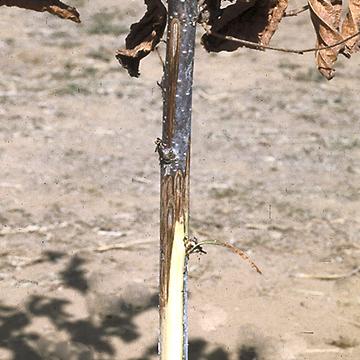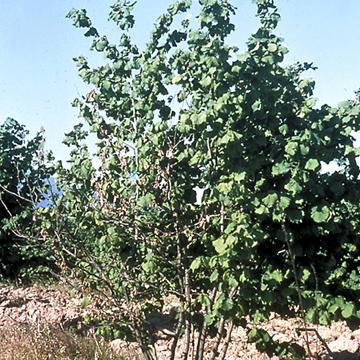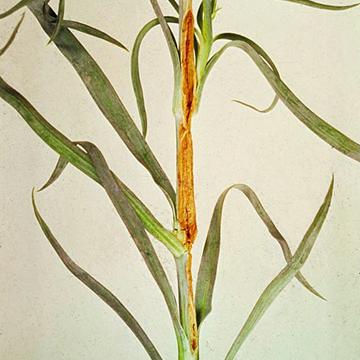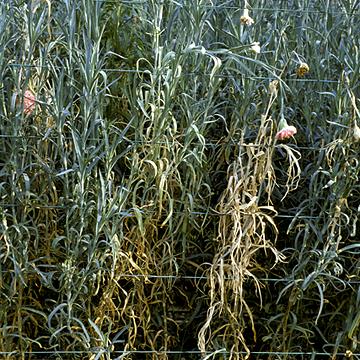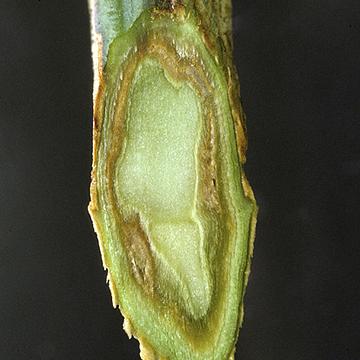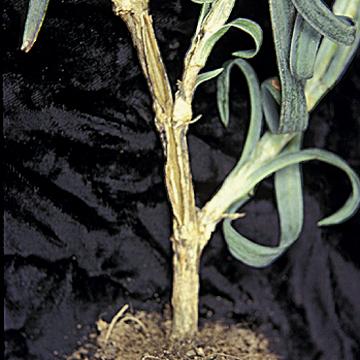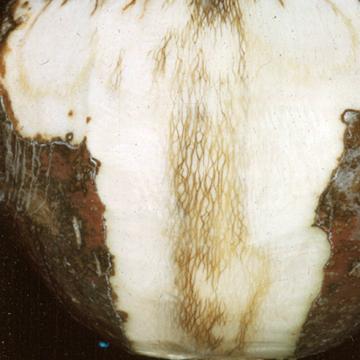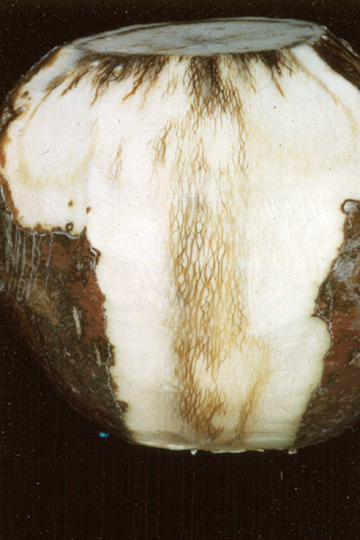DISEASE: Bacterial blight
HOST: Hazelnut
Diseased young tree with discoloration of the cambium. Dieback of young twigs and branches is characteristic. Other typical symptoms are bud and twig necrosis and small, angular or round, water-soaked leaf spots.
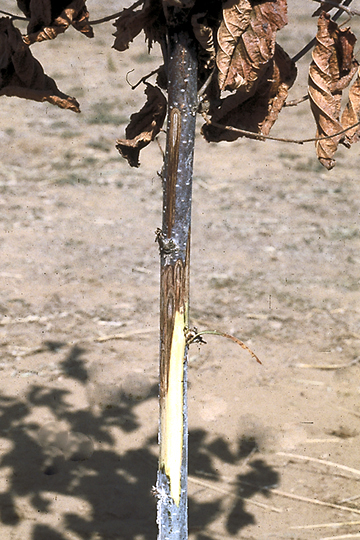
Bacterial blight | Hazelnut
DISEASE: Bacterial blight
HOST: Hazelnut (Corylus americana)
PATHOGEN: Xanthomonas arboricola pv. corylina
SOURCE: J. Pscheidt
DISEASE: Bacterial canker
HOST: Hazelnut
Primary symptoms are failure of buds to break and withering and death of new foliage in spring. Dead leaves remain attached to limbs after normal leaf fall.
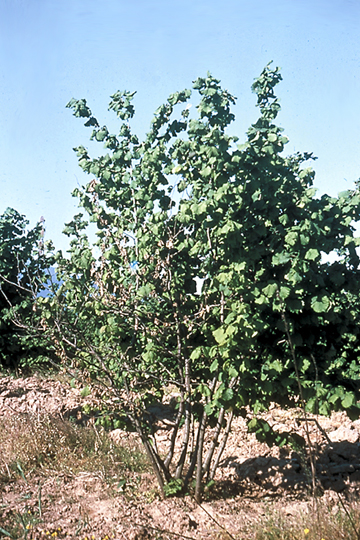
Bacterial canker | Hazelnut
DISEASE: Bacterial canker
HOST: Hazelnut (Corylus americana)
PATHOGEN: Pseudomonas syringae pv. avellanae
PATHOGEN SYNONYM: Pseudomonas avellanae
SOURCE: P. Psalidas
DISEASE: Bacterial wilt
HOST: Carnation
Carnation stem with cankers and cracks. Yellow sticky bacterial slime is often seen.
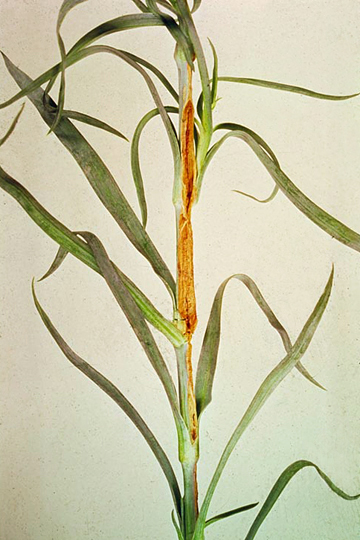
Bacterial wilt | Carnation
DISEASE: Bacterial wilt
HOST: Carnation (Dianthus caryophyllus)
PATHOGEN: Burkholderia caryophylli
PATHOGEN SYNONYM: Pseudomonas caryophylli
SOURCE: E. Hellmers, Royal Veterinary & Agricultural University
DISEASE: Bacterial wilt
HOST: Carnation
Severely diseased and withered plants.
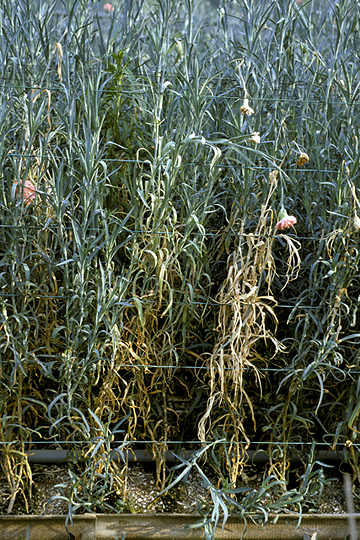
Bacterial wilt | Carnation
DISEASE: Bacterial wilt
HOST: Carnation (Dianthus caryophyllus)
PATHOGEN: Burkholderia caryophylli
PATHOGEN SYNONYM: Pseudomonas caryophylli
SOURCE: T. Saito, M. Goto
DISEASE: Bacterial wilt
HOST: Carnation
Sliced stem with discolored vascular bundles.
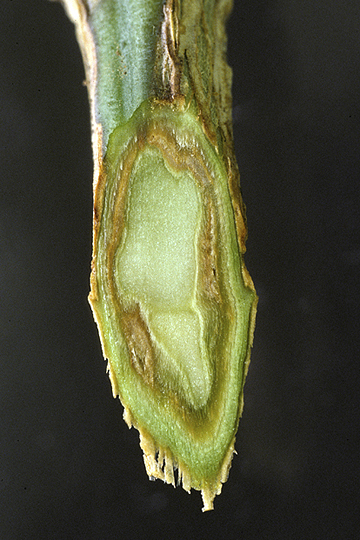
Bacterial wilt | Carnation
DISEASE: Bacterial wilt
HOST: Carnation (Dianthus caryophyllus)
PATHOGEN: Burkholderia caryophylli
PATHOGEN SYNONYM: Pseudomonas caryophylli
SOURCE: T. Saito, M. Goto
DISEASE: Bacterial wilt
HOST: Carnation
Systemic infection caused cracking and necrosis of the stem.
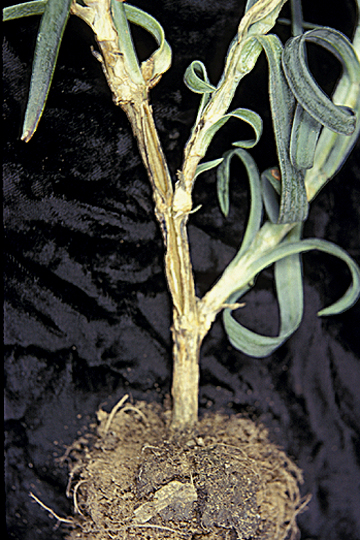
Bacterial wilt | Carnation
DISEASE: Bacterial wilt
HOST: Carnation (Dianthus caryophyllus)
PATHOGEN: Burkholderia caryophylli
PATHOGEN SYNONYM: Pseudomonas caryophylli
SOURCE: R. Raabe


